

Articles
How To Move Heavy Furniture By Yourself
Modified: January 20, 2024
Learn how to move heavy furniture by yourself with our step-by-step guide. Save time and money on professional movers and safely relocate your furniture without any hassle.
(Many of the links in this article redirect to a specific reviewed product. Your purchase of these products through affiliate links helps to generate commission for Storables.com, at no extra cost. Learn more)
Introduction
Moving heavy furniture can be a daunting task, especially if you’re doing it by yourself. Whether you’re relocating to a new home or rearranging the layout of your space, knowing how to properly move heavy furniture is crucial to ensure a smooth and injury-free process.
In this article, we will guide you through the necessary steps and techniques to move heavy furniture by yourself. By following these tips, you’ll be able to minimize the risk of accidents, protect your furniture from damage, and save money by avoiding the need for professional movers.
Before we dive into the details, it’s important to emphasize the significance of assessing the furniture and the environment. Understanding the weight, size, and structure of the items you’re moving, as well as evaluating the layout of your space, will help you determine the most efficient method to safely move the furniture.
Gathering the necessary equipment is another crucial step in successfully moving heavy furniture. From moving straps and sliders to dollies and harnesses, having the right tools at hand will make the process much easier and safer.
Moreover, clearing pathways and removing obstacles is essential to create a safe and unobstructed passage for the furniture. Tripping over objects or navigating through cluttered areas can lead to accidents and damage to both the furniture and your property.
Furthermore, understanding the proper lifting techniques is vital to protect your back and prevent strain. By utilizing the correct posture and distributing the weight evenly, you can significantly reduce the risk of injuries when moving heavy furniture.
Sliding and gliding techniques can also be handy, especially when dealing with bulky pieces of furniture or moving over smooth surfaces. By utilizing towels, cardboard, or furniture sliders, you can easily maneuver heavy items without exerting excessive force.
For particularly heavy or large furniture items, using moving straps or harnesses can provide additional support and help evenly distribute the weight. These tools allow you to use your body’s strong muscles, such as the legs and core, to lift and carry heavy objects with less strain.
Disassembling furniture for easier transport is another strategy that can make moving heavy furniture more manageable. Taking apart certain pieces, such as bed frames or tables, can reduce their weight and size, making them easier to handle and fit through doorways and narrow spaces.
Protecting furniture during the move is crucial to avoid damage. Using furniture blankets, bubble wrap, or mattress covers can help prevent scratches, dents, and breakage while in transit.
Lastly, maneuvering furniture through doorways and stairs requires careful planning and execution. By measuring the dimensions of the furniture and the available space, as well as utilizing techniques like pivoting or tilting, you can safely navigate through challenging areas.
By following these guidelines and utilizing proper techniques, you can successfully move heavy furniture by yourself. Remember to prioritize your safety and the protection of your furniture throughout the entire process. Now, let’s explore each step in more detail, so you can confidently tackle your next furniture-moving endeavor.
Key Takeaways:
- Moving heavy furniture by yourself is possible with proper planning, equipment, and techniques. Prioritize safety, clear pathways, and utilize sliding and lifting methods to ensure a smooth and injury-free process.
- Assessing furniture, gathering necessary equipment, and protecting furniture are crucial steps in moving heavy furniture. Utilize proper lifting techniques, disassemble when necessary, and maneuver carefully through doorways and stairs for a successful move.
Assessing the Furniture and the Environment
Before you start moving heavy furniture, it’s essential to assess both the furniture itself and the environment in which you’ll be moving it. By understanding the weight, size, and structure of the furniture, as well as evaluating the layout of your space, you can plan the most efficient and safe method for the move.
Begin by examining the furniture to determine its weight and dimensions. Some pieces may be deceptively heavy, so knowing the exact weight will help you choose the appropriate lifting and moving techniques. If possible, refer to the manufacturer’s specifications or consult a professional to ensure accurate information.
Next, measure the dimensions of the furniture. Consider both the length and width, as well as the height when necessary. This information is crucial for determining if the furniture will fit through doorways, hallways, and any tight spaces along the moving path.
Additionally, pay attention to the structure and stability of the furniture. Identify any loose or fragile parts, such as hinges, legs, or glass panes, as these may require extra care and reinforcement during the move. If needed, consider disassembling these components for easier and safer transport.
Once you have a good understanding of the furniture, turn your attention to the environment in which you’ll be moving it. Take note of the layout of your space, including any narrow hallways, tight corners, or staircases that you’ll need to navigate.
Measure the doorways and entryways to ensure the furniture can pass through without any issues. Be mindful of any clearance heights or widths, and consider the angle at which the furniture will need to be maneuvered to fit through the openings.
Clear the pathways of any obstacles that may hinder the movement of the furniture. Ensure there are no loose rugs, toys, or other items that can cause you to trip or obstruct the path. This step is crucial for your safety and to prevent any damage to the furniture or your property.
Finally, if you’re moving the furniture to another floor, consider the logistics of navigating staircases. Determine whether the furniture can be safely carried up or down the stairs, or if alternative methods, such as using a pulley system or hiring professionals, are necessary.
By thoroughly assessing the furniture and the environment, you’ll have a better understanding of the challenges that may arise during the move. This knowledge will allow you to plan ahead and make any necessary preparations to ensure a smooth and successful furniture-moving experience.
Gathering the Necessary Equipment
When it comes to moving heavy furniture, having the right tools and equipment can make a world of difference. By gathering the necessary items before you begin, you’ll be well-prepared to safely and efficiently move your furniture.
One of the most essential pieces of equipment for moving heavy furniture is a set of furniture sliders. These smooth, flat discs or pads are placed underneath the furniture legs or corners, allowing you to easily slide the furniture across the floor without causing damage. Furniture sliders are particularly useful for moving heavy items over hardwood, tile, or laminate flooring.
In addition to furniture sliders, you’ll also need moving blankets or padding to protect your furniture during the move. These thick blankets provide a cushion between the furniture and any walls or surfaces it may come into contact with. Wrap delicate or vulnerable areas of the furniture, such as corners or glass surfaces, in padding or bubble wrap for added protection.
A sturdy dolly or hand truck is another essential piece of equipment for moving heavy furniture. These wheeled platforms allow you to easily transport large and bulky items without putting excessive strain on your back. Look for a dolly with straps or bungee cords to secure the furniture in place during transportation.
If you’re moving furniture up or down stairs, a stair climbing dolly can be a lifesaver. These specially designed dollies have additional wheels or mechanisms that make navigating staircases much easier. They help distribute the weight of the furniture, reducing the strain on your body and minimizing the risk of accidents.
Moving straps or harnesses are highly recommended for moving extremely heavy or awkwardly shaped furniture. These straps wrap around your shoulders and back, utilizing the strength of your legs and core muscles to lift and carry the weight. They provide additional stability and control, reducing the likelihood of injuries and allowing for better overall maneuverability.
Other useful items to have on hand include a tape measure to ensure your furniture will fit through doorways and tight spaces, a set of basic tools for disassembling furniture if needed, and plastic wrap or zip ties to secure any loose parts or drawers.
Remember to wear appropriate protective gear, such as sturdy gloves to protect your hands and closed-toe shoes with good traction to prevent slips and falls.
Before you start moving your furniture, take a moment to gather all the necessary equipment. Having these tools on hand will not only make the process smoother and safer but also protect both your furniture and your home from unnecessary damage.
Clearing Pathways and Removing Obstacles
Clearing pathways and removing obstacles is an essential step when it comes to moving heavy furniture. By ensuring that your moving path is free from obstacles, you can minimize the risk of accidents, protect your furniture from damage, and make the entire process smoother and more efficient.
Start by surveying the area where you’ll be moving the furniture. Remove any loose rugs, mats, or carpets that may pose a trip hazard. These can easily cause you to lose balance or snag the furniture as you’re trying to move it. Roll them up and store them away until the furniture has been safely moved.
Next, take a look at the furniture’s path through the room or the house. Identify any tight corners, narrow doorways, or low-hanging obstacles that may obstruct the furniture’s movement. Measure the dimensions of these spaces, ensuring that the furniture can fit through without any issues.
If there are any low-hanging light fixtures, artwork, or shelves, take the time to remove them or relocate them temporarily. It’s important to create a clear overhead space to prevent any accidental damage to both the furniture and these objects during the move.
Ensure that all electrical cords, cables, and wires are secured and out of the way. Tripping on these can lead to injury and cause the furniture to topple over. Use cable organizers or tape to secure them against walls or furniture legs, keeping them tidy and preventing any accidents.
If there are any obstacles that cannot be moved, such as permanent fixtures or heavy furniture that you’re not planning to move, consider padding or protecting these objects. Use furniture blankets, bubble wrap, or foam padding to create a buffer zone between the furniture being moved and the immovable objects. This will prevent any accidental collisions and minimize the risk of damage.
During the move, make sure to keep clear communication with any helpers or family members assisting you. Establish hand signals or verbal cues to avoid any misunderstandings or accidents when maneuvering the furniture.
Remember to always prioritize your safety and the safety of others when moving heavy furniture. Take the time to clear pathways and remove obstacles, as this simple step can make a significant difference in preventing injuries and ensuring a successful move.
Lifting Techniques for Moving Heavy Furniture
When it comes to moving heavy furniture, utilizing proper lifting techniques is essential to protect your back and prevent strain or injury. By following these guidelines, you’ll be able to move heavy items more safely and efficiently.
Before you start lifting any furniture, it’s important to warm up your muscles. Stretch your arms, legs, and back to loosen up and improve flexibility. This will help reduce the risk of muscle strains or pulls during the move.
As you approach the furniture, maintain a stable base by positioning your feet shoulder-width apart. Bend your knees and keep your back straight, engaging your leg muscles as you prepare to lift. Avoid bending at the waist, as this can put excessive strain on your lower back.
When lifting the furniture, use the power of your legs to bear the weight. Push through your heels and lift with your legs, not with your back. Keep the furniture as close to your body as possible to reduce the strain on your arms and back.
If possible, enlist the help of another person to assist with the lift. Coordinate your movements and communicate effectively to ensure a smooth and coordinated effort. Each person should lift their portion of the furniture at the same time, using the same lifting technique.
If you’re moving furniture alone, consider using the “half-step” method. This involves taking smaller steps while carrying the furniture to maintain better control and balance. Take a half step with one foot, then bring the other foot alongside it before taking another half step. Repeat this motion as you move forward.
When turning or changing direction, avoid twisting your body while carrying the furniture. Instead, pivot with your feet, using small, controlled steps to turn. Twisting motions can strain your back and increase the risk of injury.
Communicate with your partner or helpers before placing the furniture down. Establish a designated spot and carefully lower the furniture, using your legs to control the descent. Avoid simply dropping the furniture or letting it fall; doing so can cause damage to both the furniture and the floor.
If you need to set the furniture down temporarily during the move, use sturdy furniture sliders or place the furniture on a soft, padded surface to prevent scratching or damage to the floor.
Remember, lifting heavy furniture requires both physical strength and proper technique. If you ever feel unsure about your ability to move a heavy item safely, it’s better to seek assistance or professional help to avoid risking injury.
By implementing these lifting techniques, you’ll be able to move heavy furniture more effectively while minimizing the risk of strains, sprains, or other injuries to your body.
Read more: How To Move A Recliner By Yourself
Sliding and Gliding Techniques
Sliding and gliding techniques can be extremely useful when it comes to moving heavy furniture, particularly when dealing with bulky items or traversing smooth surfaces. By employing these techniques, you can reduce the amount of physical exertion needed and minimize the risk of damage to both the furniture and your floors.
One common method is to use furniture sliders. These flat discs or pads, made of materials like plastic or felt, are placed under the legs or corners of the furniture. The smooth surface of the sliders allows the furniture to glide easily across the floor without causing scratches or scuff marks. Simply lift one side of the furniture, place the sliders underneath, and gently lower the furniture back down. By repeating this process on each leg or corner, you can effortlessly slide the furniture to its desired location.
If you don’t have furniture sliders on hand, you can use household items as makeshift sliders. Thick towels, old blankets, or even pieces of cardboard can be placed under the furniture’s legs and used to create a smooth, low-friction surface. However, be aware that these improvised sliders may not be as efficient as purpose-made ones, so use caution and consider the weight and stability of the furniture you’re moving.
For exceptionally heavy furniture, a lubricant can be applied to the floor to assist with sliding. Products like silicone spray or liquid soap can help reduce friction and make it easier to maneuver the furniture. Apply a liberal amount of the lubricant to the floor in the desired path of movement before attempting to slide the furniture. Be sure to clean the floor afterwards to remove any residue.
Sliding furniture across carpeted surfaces can be more challenging. In this case, you can use a technique known as the “roll and lift” method. Start by tilting the furniture slightly to one side and placing a thick towel or blanket underneath the edge. Then, roll or tilt the furniture onto the blanket and use it as a makeshift slider. Lift the other side of the furniture and place another towel or blanket underneath, repeating the process until the furniture is moved. This method helps to reduce friction on the carpet, making the movement smoother.
It’s important to note that while sliding and gliding techniques can make moving heavy furniture easier, they should be used with caution. Ensure that you have control over the furniture at all times and be mindful of any obstacles or people in the vicinity. Take breaks and rest as needed to avoid overexertion.
By employing these sliding and gliding techniques, you can minimize the strain on your body and safely move heavy furniture across various surfaces. Remember to assess the feasibility and suitability of each method based on the size and weight of the furniture, as well as the condition of the floors.
When moving heavy furniture by yourself, always lift with your legs, not your back, to avoid injury. Use furniture sliders or towels to help glide the furniture across the floor.
Using Moving Straps or Harnesses
Moving straps or harnesses can be invaluable tools when it comes to moving exceptionally heavy or bulky furniture. These specialized straps are designed to distribute the weight of the furniture more evenly and utilize strong muscle groups, reducing the strain on your body and making the task much easier.
One type of moving strap is known as a “shoulder dolly” or “forearm forklift.” These straps consist of long, adjustable straps that are worn over your shoulders and cross at your upper back, creating a harness-like support system. The lifting straps attach to the furniture, allowing you to use your legs and core muscles to lift and carry heavy objects more safely and with less exertion. The weight of the furniture is transferred from your back and arms to your legs, which are better equipped to handle the load.
When using moving straps, it’s important to follow the manufacturer’s instructions and adjust the straps to the appropriate length for your body size and the height of the furniture. Ensure that the straps are securely fastened and that the weight is evenly distributed.
When lifting with moving straps, start by positioning yourself in front of the furniture with the straps in place. Bend your knees, keeping your back straight and engaging your leg muscles. Test the weight of the furniture and adjust your position if needed. Once you’re ready, lift with your legs while keeping your back straight, using the straps to help distribute the weight.
Use slow and controlled movements when lifting and carrying the furniture. The straps give you more stability and control, but it’s still important to maintain good posture and be aware of your surroundings. Communicate with any helpers or partners to ensure smooth and coordinated movements.
When setting the furniture down, do so gently and with caution. Slowly lower the furniture, again using your legs to control the descent. Avoid dropping or letting the furniture fall, as this can cause damage to both the furniture and the floor.
Moving straps or harnesses also help to protect delicate or fragile items during transport. They prevent excessive jostling and movement, keeping the furniture more secure and reducing the risk of damage.
It’s worth noting that while moving straps can greatly assist with heavy furniture, they may not be suitable or effective for all types of furniture. Consider the size, weight, and shape of the furniture before using straps, and consult the manufacturer’s guidelines or seek professional help if you’re unsure.
By using moving straps or harnesses, you can take advantage of your body’s stronger muscles and reduce the strain on your back and arms. These tools provide additional support and stability, making the process of moving heavy furniture more manageable and less physically demanding.
Disassembling Furniture for Easier Transport
Disassembling furniture can be a game-changer when it comes to moving heavy or bulky items. By carefully taking apart certain components, you can reduce the weight and size of the furniture, making it easier to handle, transport, and fit through doorways and narrow spaces.
Start by gathering the necessary tools for disassembly, such as screwdrivers, Allen wrenches, or power tools if applicable. Refer to the furniture’s instruction manual or manufacturer’s guidelines for specific instructions on disassembly.
Take a systematic approach and work one piece at a time. Begin with removable parts, such as doors, shelves, and drawers. Remove any screws, bolts, or connectors that hold these components in place. Keep track of these small parts by placing them in labeled bags or containers to ensure they don’t get lost during the move.
Next, consider disassembling larger pieces to make them more manageable and transport-friendly. For example, bed frames, tables, and modular furniture often have sections that can be dismantled. Remove legs, detach tabletops, or separate modular sections as needed, following the manufacturer’s instructions or using your best judgment to avoid damaging the furniture.
Keep in mind that some furniture may require special care when disassembling. For instance, antiques or heirloom pieces may be more delicate or have intricate mechanisms. In such cases, it’s advisable to consult with professionals or furniture restoration experts to ensure proper disassembly and reassembly without causing damage.
As you disassemble the furniture, be mindful of screws, nails, or other hardware that may be hidden or difficult to access. These pieces may be crucial for the structural integrity of the furniture, so it’s important to keep them organized and ensure they are safely stored for reassembly.
Once you’ve disassembled the furniture, bundle any loose components together and wrap them securely to prevent scratches or damage. Use tape, plastic wrap, or bubble wrap to keep the parts organized and protect them during transport.
When reassembling the furniture, take your time to ensure that each piece is aligned correctly and securely fastened. Follow the reverse order of the disassembly process, referring to any documentation or photographs you may have taken during the disassembly phase.
While disassembling furniture can make transport easier, it’s worth mentioning that not all furniture is designed to be taken apart. Some items may be permanently attached or simply too complex to disassemble without professional assistance. In such cases, focus on utilizing other techniques, such as sliding or using moving straps, to maneuver the furniture as safely and efficiently as possible.
By disassembling furniture when appropriate, you can significantly reduce the weight and size of the items, making the moving process more manageable and less physically demanding. Take your time, follow instructions, and seek professional help if needed to ensure proper disassembly and reassembly of your furniture.
Protecting Furniture During the Move
Protecting your furniture during the move is crucial to ensure its safety and prevent any damage or scratches. By taking the necessary precautions and utilizing protective materials, you can preserve the integrity and appearance of your furniture throughout the moving process.
One of the simplest and most effective ways to protect furniture is by using furniture blankets or moving pads. These thick, padded blankets provide a cushioning layer between the furniture and any hard surfaces or other items it may come into contact with. Wrap the furniture completely in the blankets, securing them with tape or straps to prevent them from slipping off.
In addition to furniture blankets, bubble wrap or foam padding can be used to protect delicate or vulnerable areas of the furniture. Wrap these areas carefully to provide an extra layer of cushioning. For furniture with glass surfaces or mirrors, consider using specialized glass protection film or cardboard cutouts to prevent any accidental breakage.
For mattresses and upholstered furniture, consider investing in mattress or furniture covers. These protective covers are specifically designed to shield the items from dust, dirt, and moisture during the move. They can also help prevent stains and tears that may occur during handling and transport.
If you’re stacking or loading furniture into a moving truck or van, use sturdy straps or bungee cords to secure the items in place. This helps prevent shifting and sliding, reducing the risk of damage or toppling during transit.
When placing furniture in the moving vehicle, be mindful of how items are positioned. Place heavier items on the bottom and lighter ones on top to ensure stability. Use furniture straps or ropes to secure items to the sides of the truck, keeping them from shifting during transportation.
Labeling and organizing your furniture is also important for protection and ease of handling. Use colored labels, markers, or stickers to indicate the fragility or importance of certain items. This will alert movers or helpers to be particularly cautious when handling those items.
Additionally, when navigating through doorways, hallways, or staircases, use corner protectors to safeguard against scrapes and dings. These foam or plastic coverings can be placed over sharp corners or edges to minimize the risk of damage to both the furniture and the surrounding walls or doorframes.
Lastly, it’s important to handle furniture with care and avoid dragging or sliding heavy items on the floor. This can cause scratches or marks on both the furniture and the floor surface. When moving furniture, lift it off the ground or use furniture sliders to minimize friction and potential damage.
By taking the necessary precautions and utilizing protective materials, you can ensure that your furniture stays in excellent condition throughout the move. Remember to prioritize the safety and protection of your furniture, as it is an investment that you’ll want to enjoy for years to come.
Read more: How To Move A Mattress By Yourself
Safely Maneuvering Furniture Through Doorways and Stairs
Maneuvering furniture through doorways and staircases can be one of the most challenging aspects of the moving process. However, with careful planning and the right techniques, you can navigate these obstacles successfully and avoid damage to both the furniture and your property.
Before attempting to move furniture through a doorway, measure its dimensions to ensure it will fit without any issues. Take into account the height, width, and depth of the furniture, as well as any protruding parts, such as handles or legs. Measure the dimensions of the doorway as well, as there may be tight spots or corners to consider.
If the furniture doesn’t fit through the doorway as is, consider disassembling it if possible. Remove any removable or detachable parts that may be causing the obstruction, such as legs or armrests. Follow the manufacturer’s instructions or use your best judgment to avoid damaging the furniture during disassembly.
When maneuvering furniture through doorways, it can be helpful to tilt the piece at an angle. Start by lifting one side of the furniture, angling it so that the highest point clears the doorway frame. This allows you to navigate through narrow spaces more easily. However, be cautious of any fragile or delicate parts that may be more susceptible to damage when tilted.
For particularly large or heavy pieces of furniture, seeking assistance from others is strongly recommended. Having additional people to help support and guide the furniture through doorways can make the process much smoother and safer.
When moving furniture up or down stairs, take special care and follow these guidelines:
- Clear the staircase of any obstacles, such as loose rugs or debris, to create a clear path.
- Assess the weight and size of the furniture to determine if it can be safely carried up or down the stairs. If it’s too heavy or cumbersome, consider using a stair climbing dolly or seeking professional assistance.
- Position yourself and your helpers at strategic points along the staircase. One person should be at the bottom to guide and support the weight, while others can take turns lifting and carrying the furniture.
- Take slow and deliberate steps when navigating the stairs, keeping a firm grip on the furniture and maintaining good posture. Avoid rushing or making sudden movements that could cause you to lose control.
- Use furniture straps or harnesses for additional support and stability if needed.
- If the furniture is too large or awkward to fit up or down the stairs in one piece, consider disassembling it if feasible. This will make the individual components easier to handle and transport.
Always prioritize safety when maneuvering furniture through doorways and stairs. Take your time, communicate with your helpers, and assess the situation before proceeding. Seeking professional help or consulting moving experts may be necessary for challenging situations or exceptionally heavy items.
By following these guidelines and using caution, you can successfully navigate doorways and stairs with your furniture, ensuring a smooth and damage-free moving process.
Conclusion
Moving heavy furniture by yourself can seem like an overwhelming task, but with the right knowledge and techniques, it can be done safely and efficiently. Throughout this article, we’ve discussed the key steps and strategies for moving heavy furniture, from assessing the furniture and the environment to safely maneuvering it through doorways and stairs.
By assessing the furniture and the environment, you gain valuable insight into the weight, size, and structure of the items you’ll be moving. This allows you to plan the most efficient method for the move and avoid any potential obstacles or difficulties along the way.
Gathering the necessary equipment, such as furniture sliders, moving straps, and dollies, provides you with the tools to make lifting and transporting heavy furniture much easier. These items help distribute weight, protect your back, and minimize the risk of injuries.
Clearing pathways and removing obstacles is essential to create a safe and unobstructed path for the furniture. Tripping over objects or navigating through cluttered areas can lead to accidents and damage, so taking the time to clear the way is crucial.
When it comes to lifting heavy furniture, utilizing proper techniques, such as using your legs and keeping the furniture close to your body, prevents strain and reduces the risk of injury. Sliding and gliding techniques, as well as the use of moving straps or harnesses, provide additional support and make moving heavy items more manageable.
Disassembling furniture, when possible, is a smart approach to reduce weight and size, making it easier to handle and transport. Taking apart and protecting fragile components, as well as properly wrapping and securing loose parts, ensures that the furniture arrives in its new location intact.
Throughout the move, taking steps to protect your furniture is essential. Utilizing furniture blankets, bubble wrap, and mattress covers helps prevent scratches, dents, and breakage during transit. Securing the furniture properly in the moving vehicle and using corner protectors or padding during maneuvering further safeguards your furniture.
Lastly, safely maneuvering furniture through doorways and stairs requires careful planning, assessing dimensions, and utilizing techniques like tilting or disassembly. By being cautious and seeking assistance when needed, you can navigate these challenging areas without causing damage to your furniture or your property.
In conclusion, moving heavy furniture by yourself is entirely possible with the right knowledge and techniques. Prioritize safety, plan ahead, and utilize the appropriate tools and equipment throughout the moving process. By doing so, you can successfully move heavy furniture, protect your back, avoid injuries, and ensure that your furniture arrives at its new destination unharmed. Good luck with your furniture-moving endeavors!
Frequently Asked Questions about How To Move Heavy Furniture By Yourself
Was this page helpful?
At Storables.com, we guarantee accurate and reliable information. Our content, validated by Expert Board Contributors, is crafted following stringent Editorial Policies. We're committed to providing you with well-researched, expert-backed insights for all your informational needs.
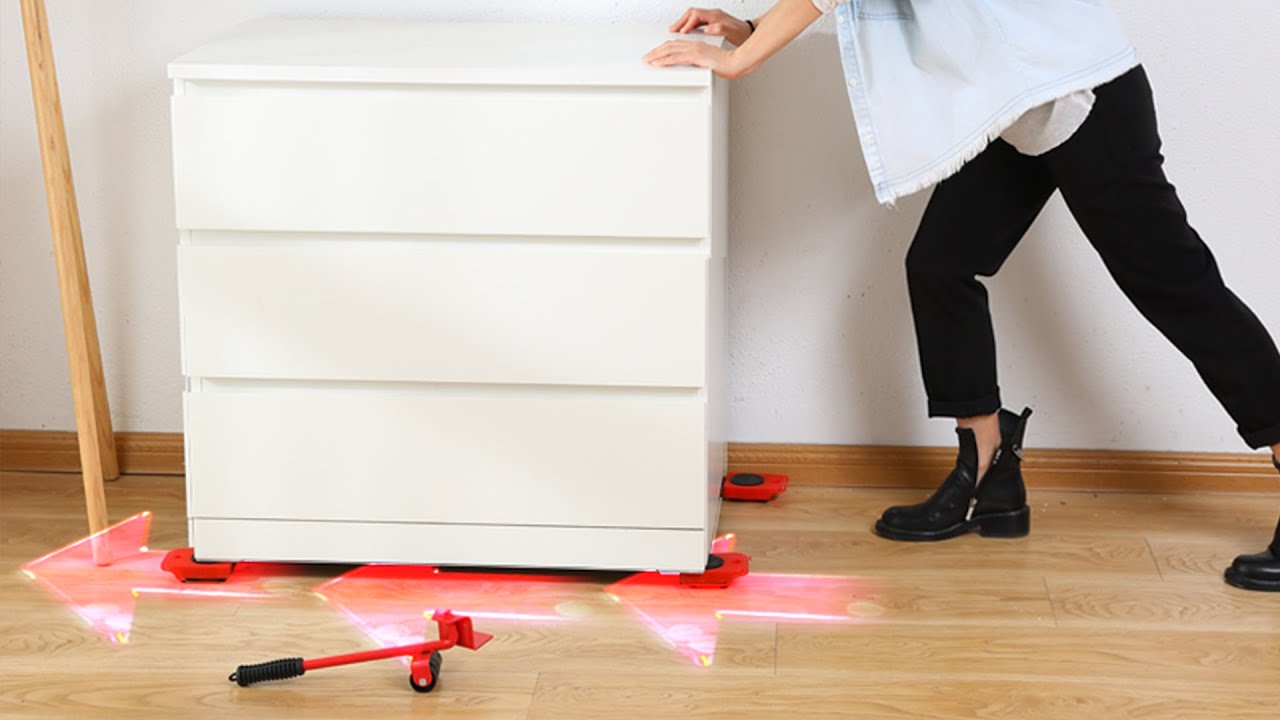
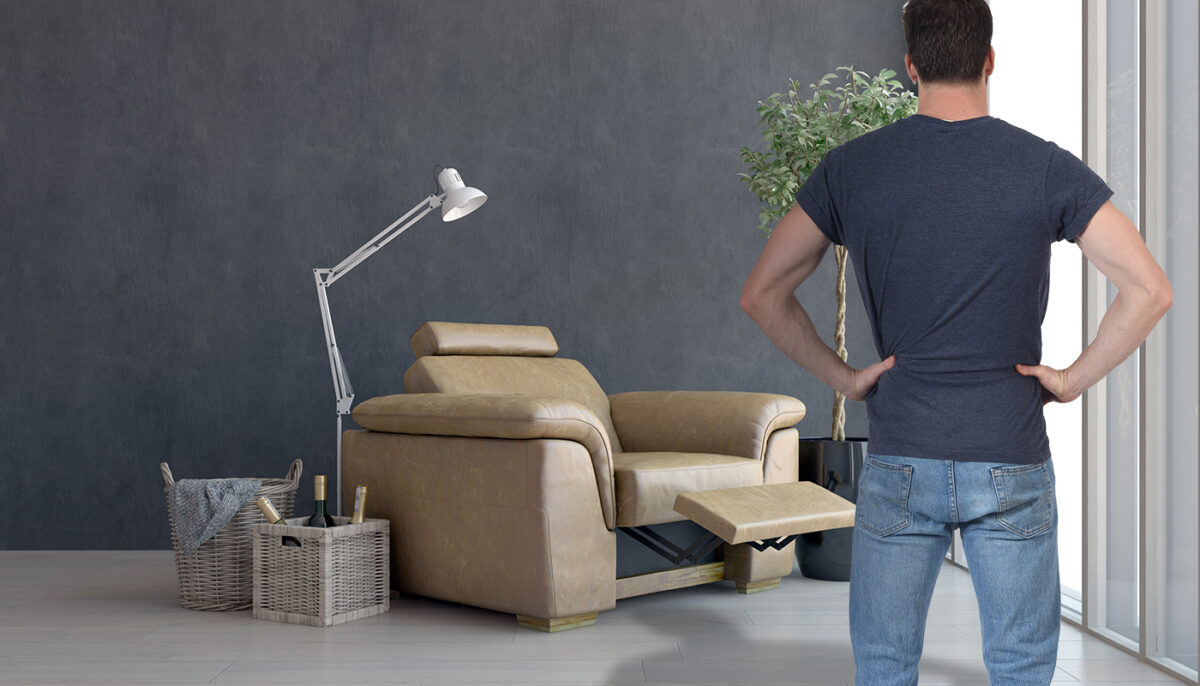
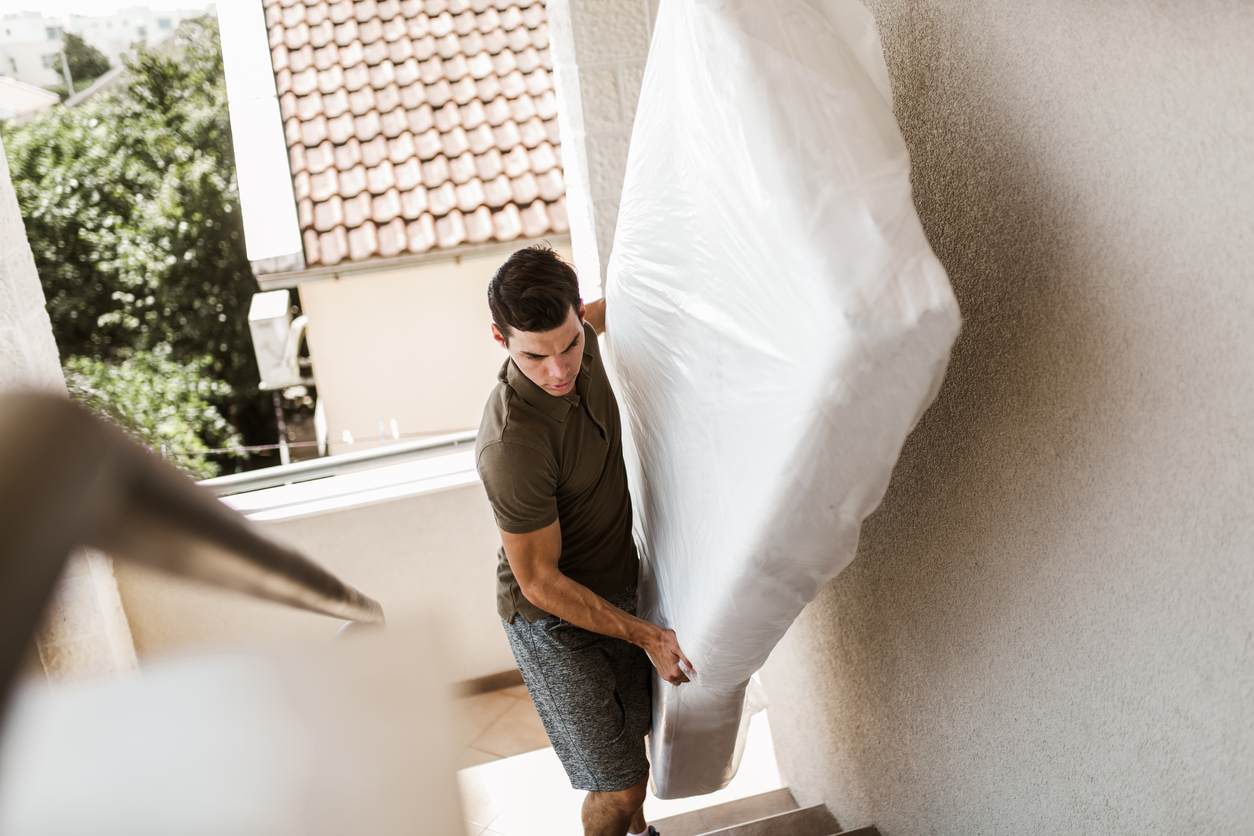

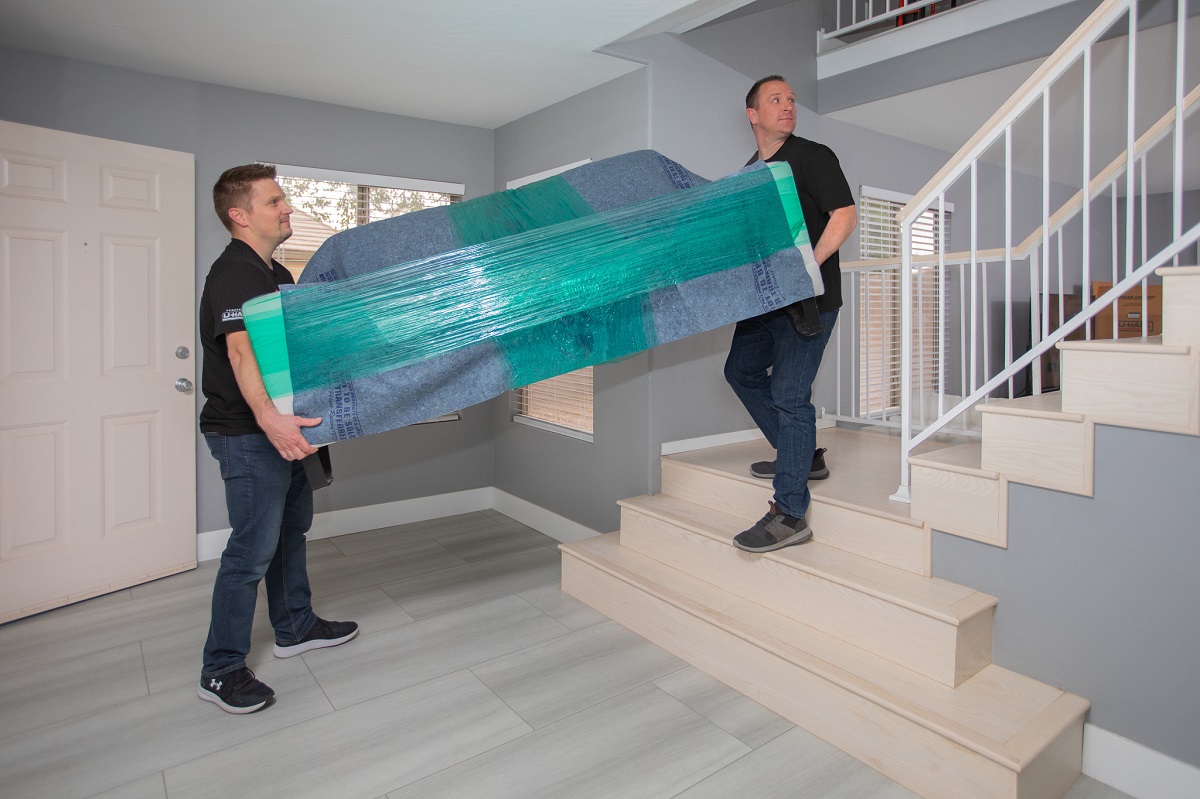




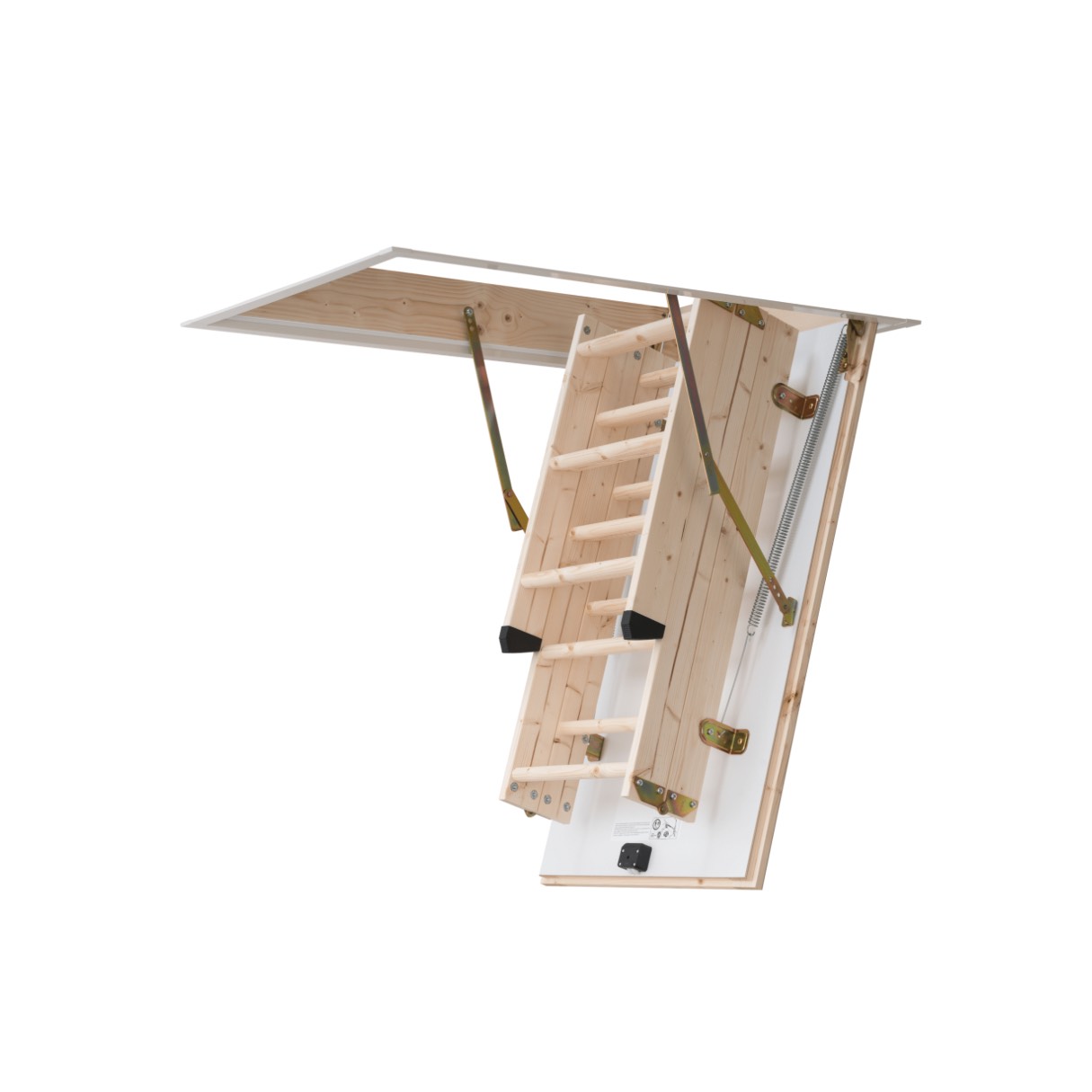

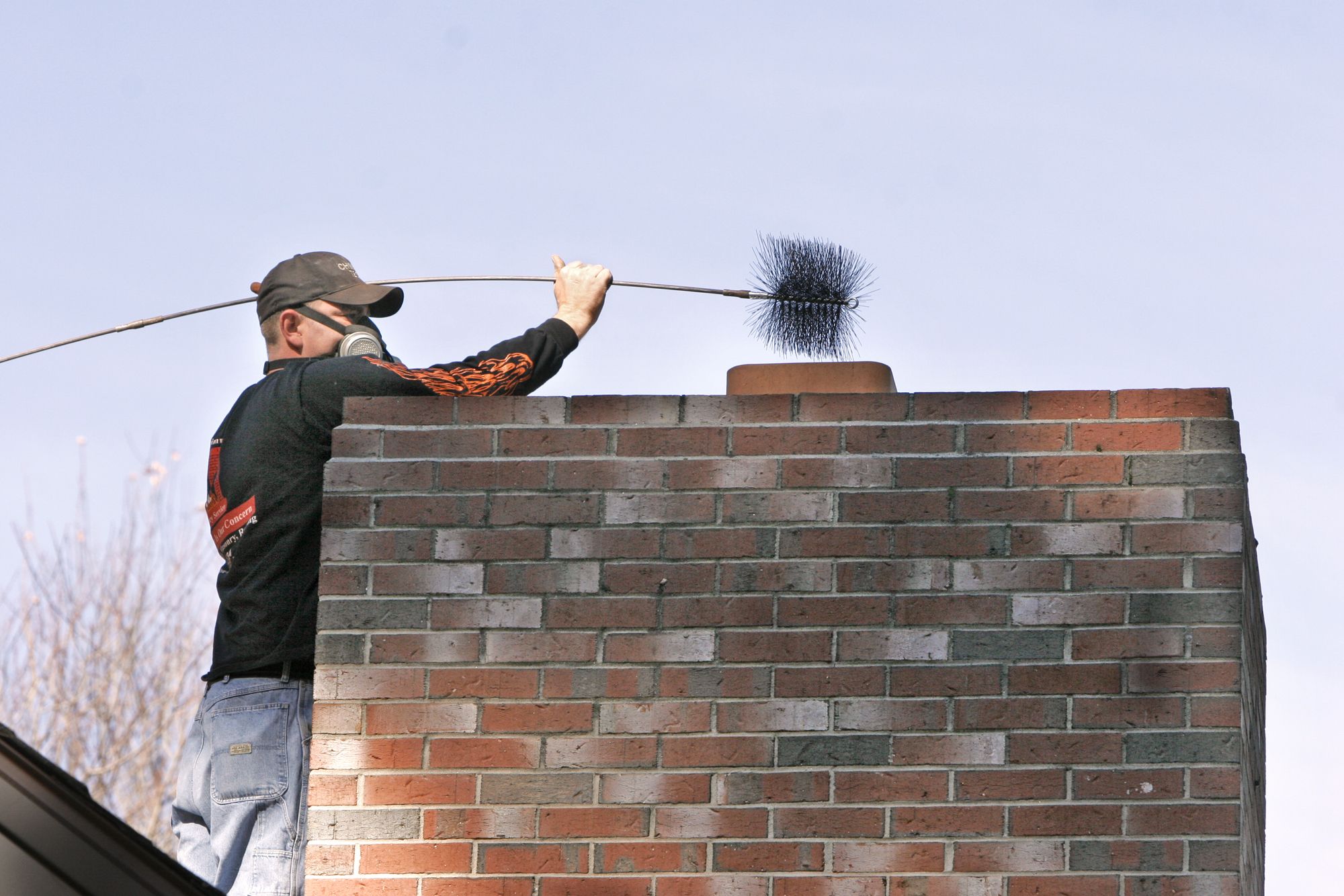


0 thoughts on “How To Move Heavy Furniture By Yourself”